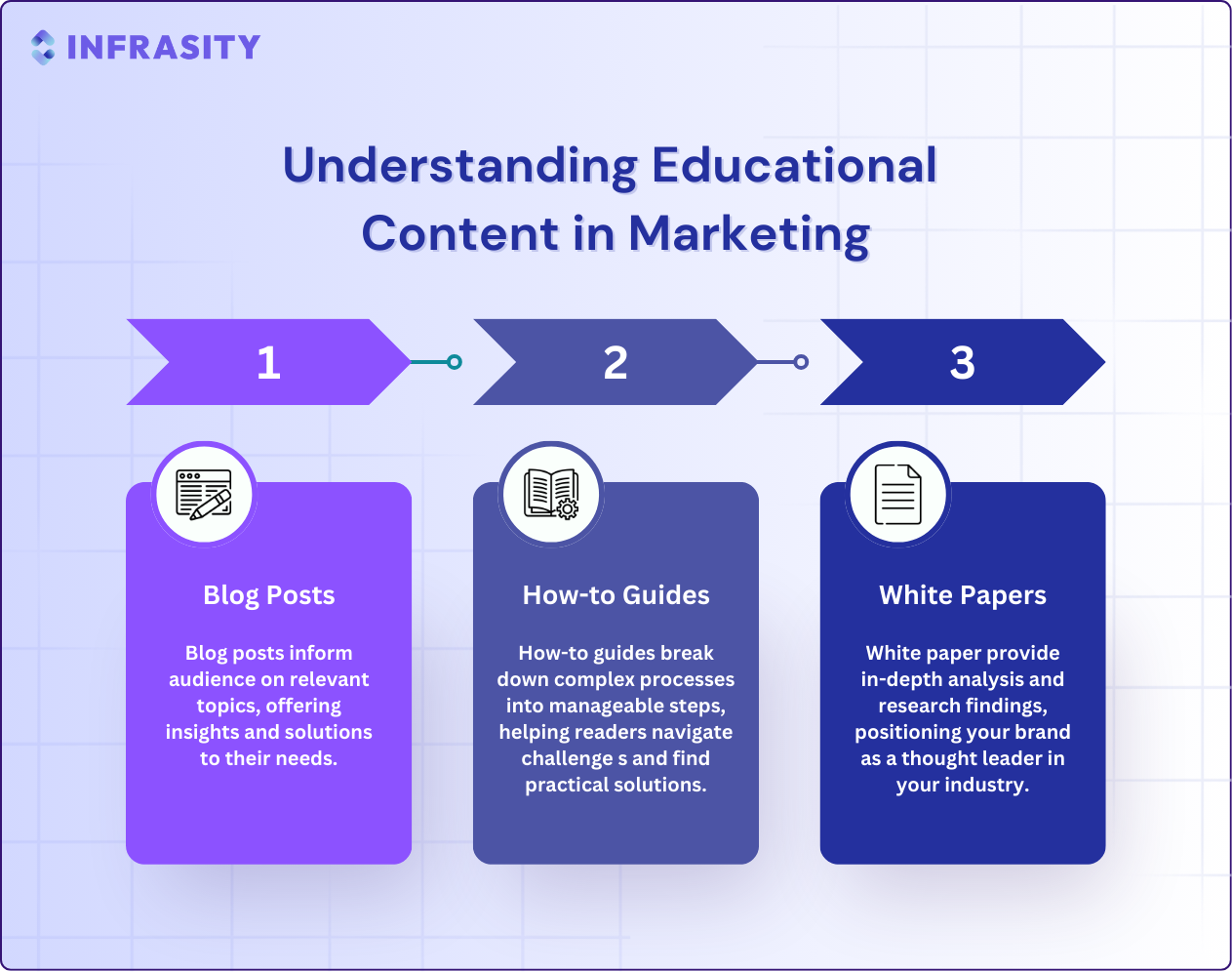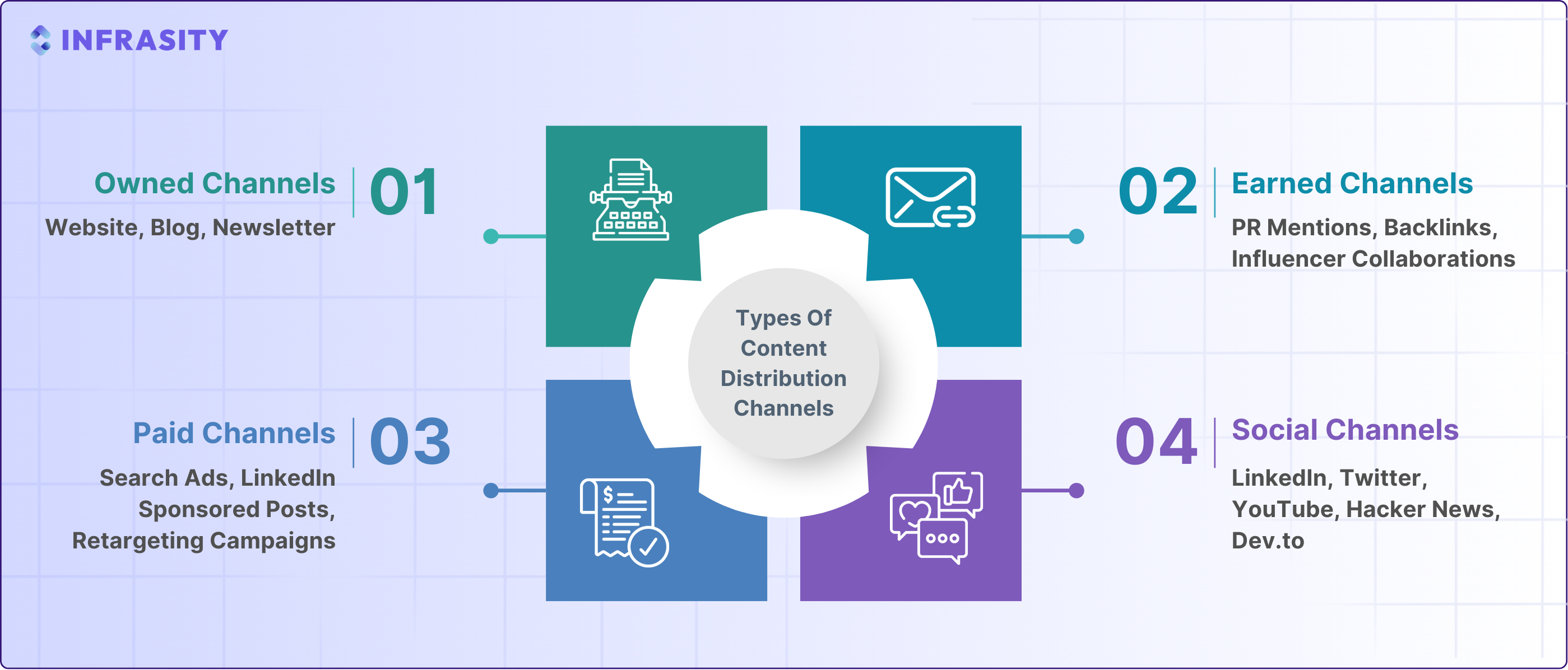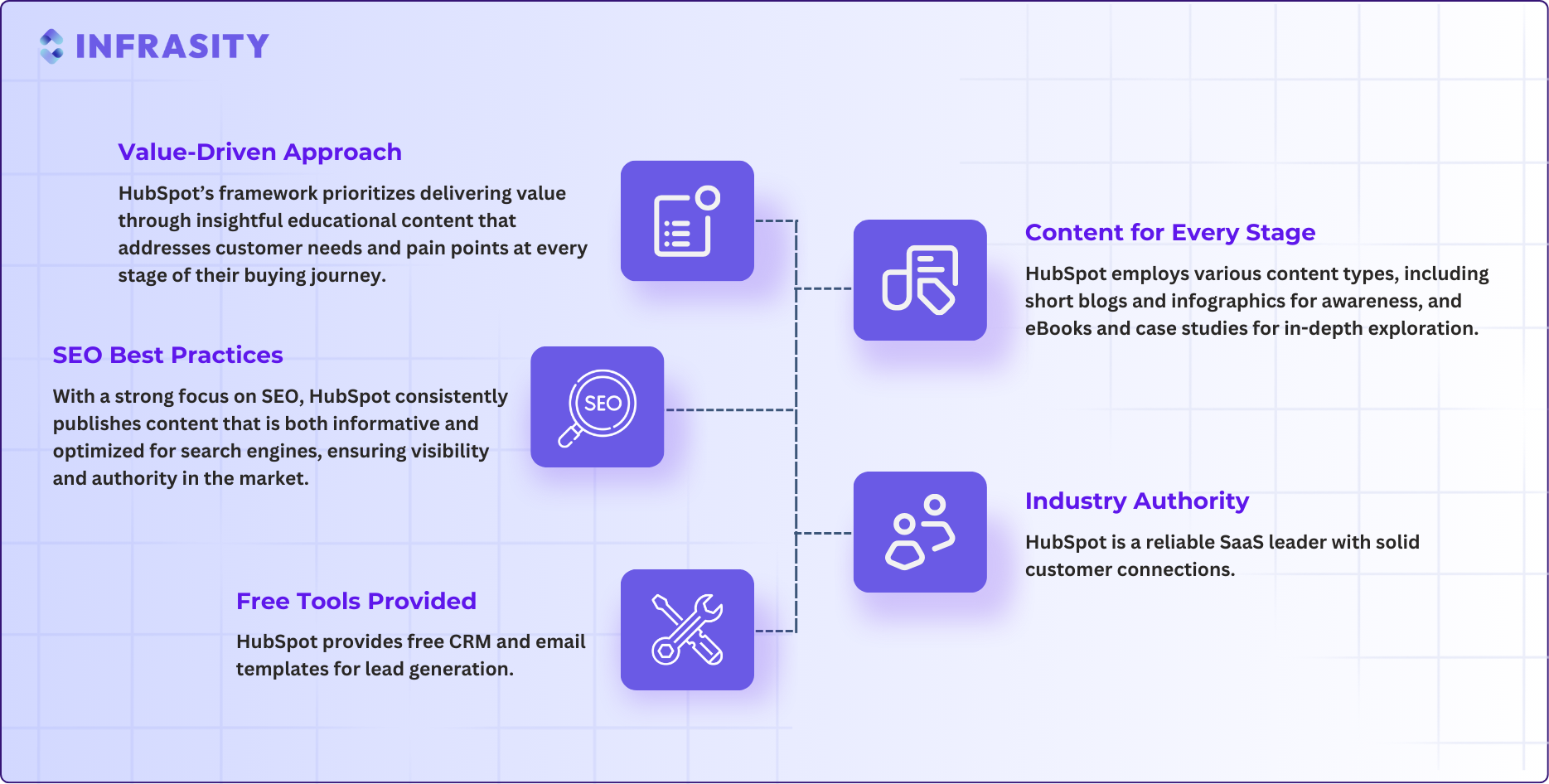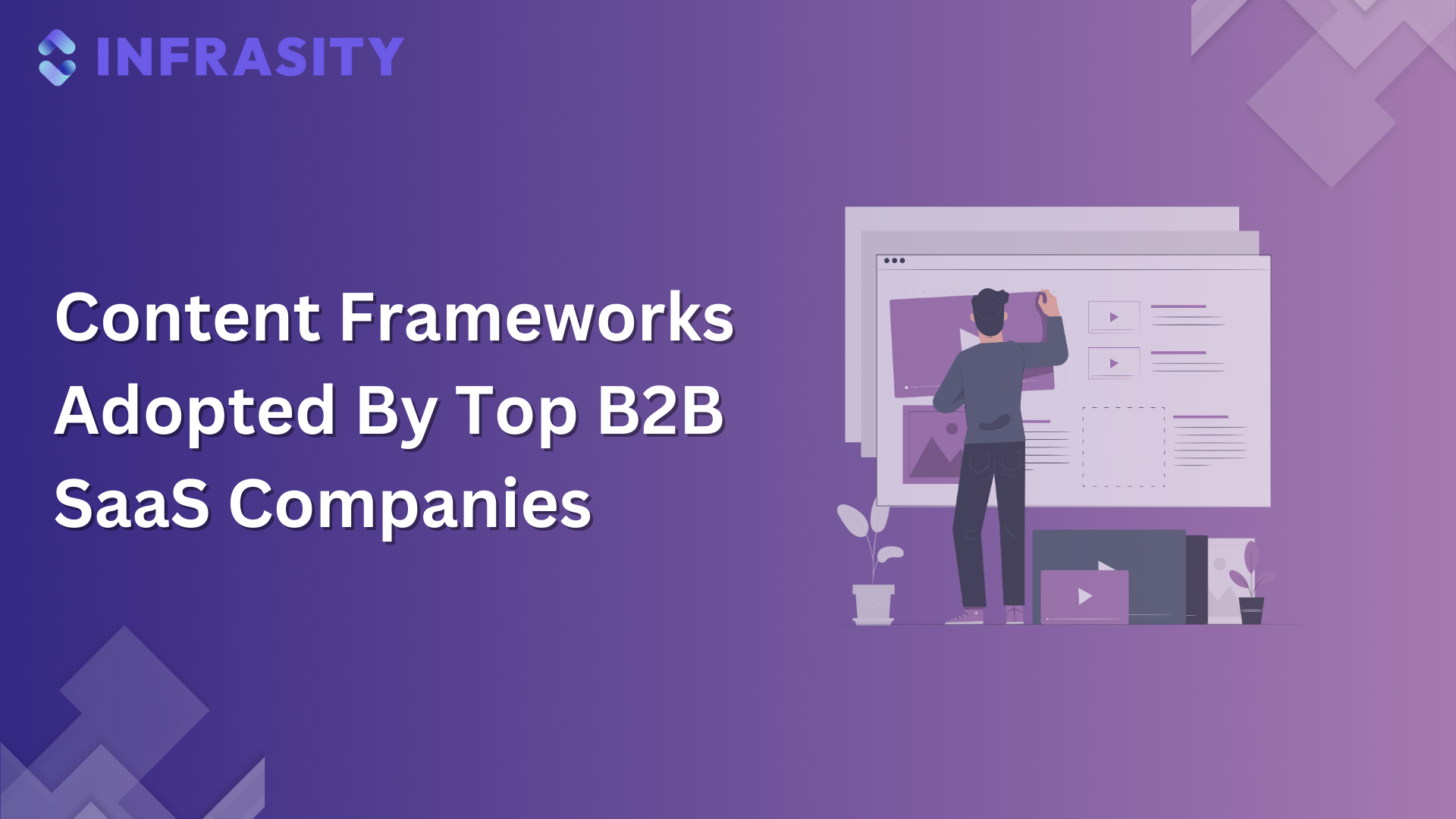Introduction
B2B SaaS companies operate in a hyper-competitive landscape where content isn't just about visibility; it's a critical driver of lead generation and revenue growth. Unlike B2C marketing, where emotional storytelling often takes center stage, B2B content must educate, nurture, and convert decision-makers at every stage of the buyer’s journey.
A large number of SaaS companies have trouble making content that produces results. Companies that publish random content without planning attract many visitors but struggle to generate sales from these audiences. The most successful B2B SaaS brands use organized content strategies that help them establish market leadership, attract prospects naturally, and boost sales process speed.
An effective content framework depends on what makes it work. Creating a content calendar alone does not make an effective system. B2B SaaS leaders combine data-based content planning that shows audience pain points through their product education and thought leadership work. These guidelines determine how companies select their topics and formats, plus they identify how to spread their content and inspire purchases.
We will examine the proven content structures that help B2B SaaS companies take control of their market share. You will understand how to develop content that grows your brand naturally while increasing your market authority and attracting potential customers.
The Importance of Understanding the Target Audience
B2B SaaS companies need to produce quality content that connects with their specific customer group. B2B customers apply analytical thinking throughout their purchase process, which includes many decision-makers and takes longer to complete. Your content must align with their specific pain points, industry challenges, and purchase considerations to move them from awareness to conversion.
How Audience Understanding Transforms B2B SaaS Content?
1. Personalized Messaging for Different Decision-Makers
B2B content fits only one type of stakeholder at a time in this market. The CTO evaluating an enterprise SaaS product will have unique criteria for review that differ from procurement officers and end-users. Although the CTO looks at scalability, security, and integration, the procurement officer seeks affordable solutions with strong returns on investment while end-users seek products that work well and boost their work output.
Solution to it: Create exclusive content for specific audiences, including technical papers for IT managers while CFOs see ROI-based studies and end-users use product learning materials.
2. Aligning Content With the B2B Buyer’s Journey
When buying B2B SaaS solutions, users follow a clear buying path divided into awareness seeking, solution exploring, and vendor selection steps.
- Awareness Stage (Problem Identification): Buyers recognize a challenge and begin researching solutions.
- Content Needed: Educational blogs, industry reports, trend analysis.
- Consideration Stage (Solution Exploration): Buyers compare different SaaS providers and evaluate potential fits.
- Content Needed: Comparison guides, case studies, product demos.
- Decision Stage (Vendor Selection): Buyers finalize their choice, looking for validation and proof points.
- Content Needed: ROI calculators, testimonials, in-depth case studies, free trials.
Solution: Create content that guides buyers at every stage, helping them progress naturally through the funnel.
3. Using Data-Driven Insights for Precision
B2B SaaS companies should avoid using assumptions when developing content strategy because they need to use quantitative audience insights as the foundation for refinement. This includes:
- Website Analytics: Examines user actions while tracking page accesses together with the points where visitors leave.
- Customer Interviews & Feedback: Real obstacles and content priorities become clear through direct interactions and feedback from customers.
- Intent Data & Search Trends: Help B2B companies discover actual market demands of prospective buyers.
Solution: The solution involves the perpetual optimization of content which depends on customer engagement metrics and queries and market trend analysis.
4. Building Trust & Thought Leadership
B2B customers seek more than just products since they need expert knowledge and firm foundations of trust with their suppliers. The creation of trustworthy content backed by research leads your brand to achieve authority status. Organizations that generate frequent high-quality research and expert perspectives enjoy increased trust from customers and improve both lead conversion and reduce sales-related barriers.
Solution: Invest in in-depth guides, original research, expert interviews, and webinars to demonstrate industry leadership.
Tired of wasting engineering time on content?
Content Strategy Development
Creating a foolproof content strategy framework for B2B SaaS companies starts with a thorough understanding of the current system.
Once you have a clear picture of your target audience, the next step is crafting content that truly resonates with them. Here is a breakdown of a content strategy framework that is bound to drive meaningful results:
1. Identifying Gaps And Opportunities Through Content Audit
Performing a content audit is the starting point of developing a content strategy framework that is successful. In this step, you will assess your available content and check what has been successful and where there are shortcomings. Go through all your existing blogs, case studies, and other content assets. This will help you identify which content needs enhancement and what new possibilities can be pursued to make it more effective.
There are several ways to identify content gaps:
- Use Google Keyword Planner and SEMrush to detect missing keywords while making your content SEO friendly.
- Talk with your clients to get feedback while conducting surveys as well as communicating with your sales personnel to discover audience requirements and challenges.
- Research your competitors to identify empty spots in their content so you can distinguish your content from theirs.
- Analytical tools enable you to check how your existing content performs regarding traffic metrics, engagement rates, and conversion data.
2. Define Objectives For Goal Alignment
The next step after content evaluation is understanding your business's objectives. What is their purpose if your blog posts do not align with the goals? Review each piece thoroughly to ensure it closely aligns with your business goals.
Common goals for SaaS companies include:
- Improve brand awareness: The main purpose of creating content is to increase your brand’s visibility in the online medium.
- Increase marketing qualified leads (MQLs): This involves attracting high-quality leads who are ready to engage with your sales team.
- Reduce churn: Create educational and support-focused blog posts. This will help your current customers acquire value from your product and retain them.
3. Content Pillars
Content pillars are the fundamental themes that shape your content strategy framework. They help maintain consistency and relevancy across all your blog posts, case studies, and videos. For SaaS companies, three important core pillars are:
- Thought leadership: Updates that focus on industry developments alongside best practices so your company can position itself as an expert in the field. By sharing information, your company proves its expertise in the industry.
- Product education: Show your audience how to utilize your product by creating educational content like tutorials, how-to guides, and videos.
- Customer success: Build trust with your audience by sharing customer stories and case studies. Your product delivers an important solution to the user according to this information.
Now that we’ve covered different ways to engage your audience, let’s discuss the best content formats to deliver your message effectively.
Content Types and Formats
To develop a successful B2B content strategy framework, one must be thorough with different types of content. Here are the key content types and formats that work at different funnel stages.
1. Educational Content

At the top of the funnel (TOFU) is educational content. Educate your audience about the solution they may need through the following formats:
- Blog posts
- How-to guides
- White papers
While educating your audience is key, adding an element of entertainment can make your content even more engaging and memorable.
2. Visual Content
B2B decision-makers look for quick data insights that help them make calculated choices. Instead of generic infographics or GIFs, focus on data-driven reports. Use concise video explainers that break down complex solutions and highlight ROI. Your visual content should deliver value instantly and support decision-making without wasting time.
Canva’s YouTube channel has over 660K subscribers, proving the effectiveness of visual content in attracting and engaging their audience.
3. Interactive Content
Interactive resources that include webinars, quizzes, live Q&As, and ROI calculators are effective at engaging audiences who are at the middle-funnel stage (MOFU). Interactive content creates greater engagement, helping businesses learn more about their target audience.
4. UGC & Community Content
User-generated content (UGC) and community content, such as forum and comment section reviews and testimonials, sit at the bottom of the funnel (BOFU). For UGC and community content in B2B SaaS, developers’ clients are the existing customers; therefore, the content is very persuasive.
The audience gets more motivated to buy once they get favorable comments from customers who have used a product. This type of content is powerful for B2B SaaS because companies often prefer this from their industry’s counterparts.
Creating great content is just one part of the equation—choosing the right distribution channels ensures it reaches the right audience.
Types Of Content Distribution Channels
To build brand awareness and reach the right audience, using the right channels to share your content is important.

1. Owned Channels
Your website, blog, and email newsletters are some of the common channels you own. In this space, you can control your content and brand message. With the help of owned channels, you can strengthen your relationships with your audience and share valuable insights.
2. Earned Channels
Content that you have no direct control over is earned. Examples include PR mentions, backlinks, and influencer collaborations. This exposure helps build brand credibility and expand your reach.
3. Paid Channels
Paid channels allow companies to target specific audiences and accelerate the customer acquisition process. Note that this is not a part of organic marketing frameworks. Paid channels include:
- Search Ads (Google Ads, Bing Ads): Capture high-ticket leads by appearing at the top of search results when prospects look for B2B SaaS solutions.
- LinkedIn sponsored posts: These posts can promote content, job listings, or services to a targeted professional audience based on job title, company size, and industry, making them ideal for B2B marketing.
- Retargeting (or remarketing) campaigns: The target users have already interacted with your website or content but didn't convert. B2B SaaS companies show ads to these users to encourage them to return and complete the desired action.
4. Social Channels
Social media helps companies build a content strategy SaaS framework in multiple ways. Popular social channels for top SaaS companies include:
- LinkedIn – Ideal for sharing professional insights and thought leadership.
- Twitter – Excellent for quick updates and interaction.
- YouTube – Perfect for in-depth product demos and tutorials.
- Hacker News – A hub for developers to explore technical articles, product updates, and discussions.
- Dev.to – A community-driven space where developers share knowledge, articles, and experiences, making it a valuable platform for SaaS companies to contribute insights.
Posting content is not enough; tracking its performance helps refine your strategy for even better results. Let’s look at some case studies.
Case Study of a Successful B2B SaaS Content Framework: HubSpot
To create a scalable and effective content marketing framework, SaaS companies often rely on structured content frameworks. These frameworks help organize content in a way that improves SEO, enhances user experience, and drives conversions. Let’s go through HubSpot's content framework.

HubSpot has revolutionized the way B2B SaaS companies approach inbound marketing, making content the core of customer acquisition and retention. The Topic Cluster Model functions as HubSpot's structured content system, which combines SEO optimization with better user experience in order to establish authority through its framework.
How the Topic Cluster Model Works?
Pillar Page:
- A lengthy essential document stands as the main authority on large topics.
- Example: “The Ultimate Guide to Content Marketing Strategy Framework for SaaS”.
- This multifaceted page presents an in-depth examination of the main subject, which functions as a source for multiple associated pieces of content.
Cluster Content:
- The supporting cluster content extends details about specific subtopics through linked back references to the pillar page.
- Examples: “How to Create a Buyer Persona for SaaS”, “SEO Best Practices for SaaS Blogs”, “Lead Generation Tactics for SaaS Companies”.
- Targeted user traffic increases through these posts, which also resolve distinct questions that users have.
Internal Linking:
- All articles in the cluster group contain links to the pillar page, and the pillar page contains links to cluster articles.
- Search engines detect the pillar page as a reliable source regarding the topic, which enhances its search ranking position.
Why is the Topic Cluster Model Effective for SaaS Companies?
- Well-structured content, along with internal links, makes search engines provide higher rankings for competitive keywords.
- The system allows users to freely move between connected content, which helps them spend more time exploring the platform.
- The deep examination of topics enables SaaS companies to establish themselves as the leaders in their field.
- Instead of random posts, SaaS brands build a structured content ecosystem that drives continuous traffic and generates leads.
This model is a key reason why HubSpot dominates in inbound marketing, making it a gold standard for SaaS companies aiming for long-term growth through content.
Every devtool startup needs content. Most do it wrong.
Conclusion
Top B2B SaaS companies are at the top because of their excellent content strategy frameworks. Adapting to the right marketing strategy framework has helped boost brand authority and drive leads and conversions.
A robust content strategy begins with a deeper understanding of your audience. Your audience comprises key figures like decision-makers, influencers, and users. B2B SaaS companies can achieve this through buyer personas.
The next thing to consider is the customer’s journey stage—Awareness, Consideration, and Decision-making. Remember that targeting users at different stages requires different planning.
Content can be of several different variations, including insightful blogs, case studies, webinars, and user-generated content. B2B SaaS companies can maximize their reach and engagement by distributing this content across owned, earned, and paid channels.
If you're looking for technical blog services, you can book a Free Demo with Infrasity to gain insights on how you can leverage content for better reach and conversions.
FAQs
1. What Are the Content Pillars of SaaS Companies?
The key content pillars of SaaScompanies are thought leadership, educational resources, product features, industry insights, and customer success stories. They establish trust and user collaboration.
2. What is B2B SaaS Content?
B2B SaaS content educates business clients about product solutions. It shows its value and how it can solve specific business challenges through blog posts, whitepapers, case studies, and more.
3. What is a SaaS Content Strategy?
A SaaS content strategy includes setting clear business objectives, defining buyer personas, selecting content formats, and sharing content on different channels.


